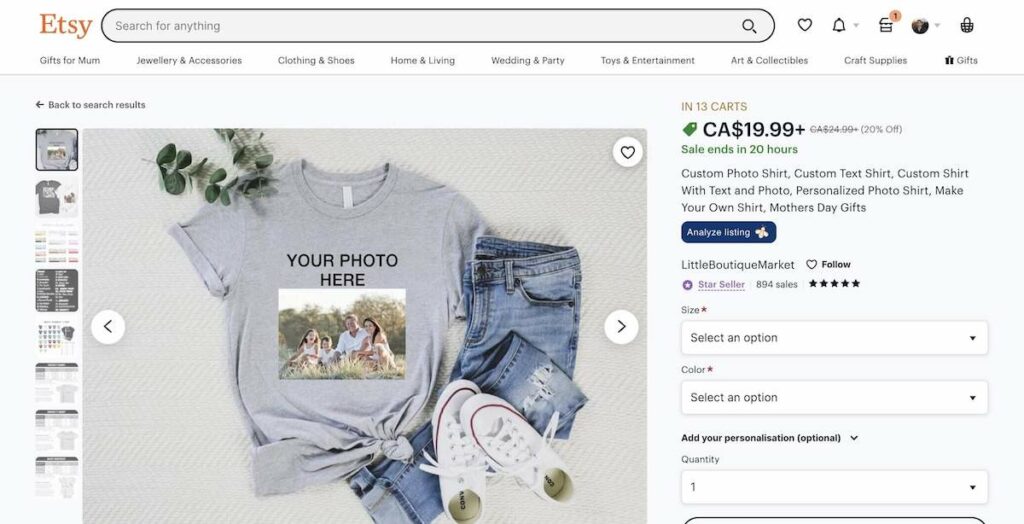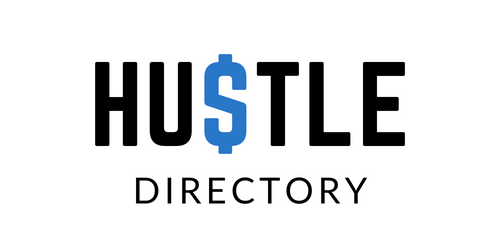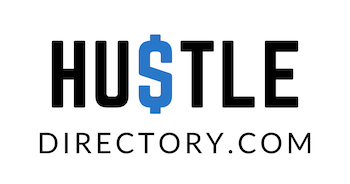Welcome to the world of print-on-demand, a business model that has gained significant traction in recent years. If you’re curious about what is print on demand and how you can make money with it, you’re in the right place. In this article, we’ll break down how print-on-demand works, its advantages and disadvantages, the most commonly sold products, and the best ways to set up and manage your very own print-on-demand shop.
So, let’s dive in!
What Is Print On Demand?
Definition and concept
Print-on-demand is a modern business model where products are printed and created only after a customer places an order. This means there’s no need to hold inventory, and you can offer a vast range of products without the upfront investment. It’s an excellent opportunity for entrepreneurs and creative individuals to start a low-cost, low-risk business with significant growth potential.
Why choose print-on-demand over traditional inventory models?
Print-on-demand offers several advantages over traditional inventory models, making it an attractive option for business owners:
- Reduced overhead costs: With print-on-demand, there’s no need to purchase products in bulk or rent storage space to hold inventory. This substantially lowers the cost of starting and running a business.
- Minimal risk: Since products are only created after an order is placed, you won’t be left with unsold stock or wasted resources, reducing the financial risk involved in running a business.
- Flexibility: You can offer a wide variety of products without having to worry about storing and managing inventory. This allows you to experiment with different designs and items to find the perfect combination that appeals to your target audience.
- Efficient use of resources: Traditional inventory models can lead to overproduction and waste. Print-on-demand is a more sustainable approach, as it only produces items when there’s demand, leading to more efficient use of resources.
How Print-On-Demand works
The print-on-demand process consists of four main steps:
- Creation of custom designs: You create your unique designs or hire a designer to make them for you. This is your opportunity to let your creativity shine and develop products that resonate with your target audience.
- Integration with e-commerce platforms: You can integrate your designs with various marketplaces such as Etsy, Amazon Merch, Redbubble, or TeePublic. This allows you to reach a broader audience and increase your chances of generating sales. Alternatively, you can open your own independent e-commerce store.
- Order processing and fulfillment: When a customer orders a product, the print-on-demand provider prints, packs, and ships the item directly to the customer. This eliminates the need for you to manage inventory and handle shipping logistics.
- Shipping and handling: The customer receives their order, and you earn a profit without having to worry about inventory or shipping logistics. This allows you to focus on growing your business and creating new designs that appeal to your customers.
These are the main defining characteristics of what is print on-demand. By choosing print-on-demand over traditional inventory models, business owners can save money, reduce risk, and enjoy greater flexibility in their product offerings. This makes it an ideal option for entrepreneurs looking to build a successful online business.
Selling On Platforms vs. Your Own Store

There are two primary ways to sell print-on-demand products: selling on marketplaces or setting up your own online store. Alternatively, Etsy exists as a bit of a hybrid. Each option has its benefits and drawbacks, which we’ll explore in more detail below.
Selling On Marketplaces
Marketplaces like Teespring, Amazon Merch, TeePublic, Redbubble, and Society6 provide a comprehensive solution for selling print-on-demand products. These platforms not only act as a marketplace where customers can discover and purchase your designs, but they also handle the back-end processes, including printing, packing, shipping, and customer service. This allows you to generate passive income with minimal effort.
Benefits:
- Easy setup and management
- Access to a built-in customer base
- No need to manage inventory, shipping, or customer service
- Potential for passive income
Drawbacks:
- Lower profit margins due to platform fees
- Less control over branding and store customization
- More competition from other sellers
- Less ability to use marketing tactics or integrations
Most Common Marketplaces:
Selling On Your Own Store
Setting up your own online store using a platform like Shopify gives you more control over your branding and customization, and allows for better profit margins. However, you’ll need to handle customer service, integrate with print-on-demand providers, and manage your own marketing efforts to drive traffic to your store.
Benefits:
- Greater control over branding, customization, and third-party apps
- Better profit margins due to lower platform fees
- Ability to build a unique store and stand out from competitors
- More ownership over your customers
Drawbacks:
- More complex setup and management
- Responsibility for customer service and managing integrations with print-on-demand providers
- Need to monitor inventory levels from your suppliers
- Need to handle your own marketing efforts to drive traffic and sales
By considering the benefits and drawbacks of selling on marketplaces and setting up your own store, you can choose the approach that best suits your needs and goals as a print-on-demand business owner.
Advantages and Disadvantages of Print-On-Demand
When considering a print-on-demand business, it’s essential to understand both the advantages and disadvantages of this model. Here, we’ll dive deeper into the pros and cons to help you make an informed decision.
Advantages
- Low startup costs: Print-on-demand eliminates the need for a significant upfront investment in inventory, storage, and equipment. This makes it easier for new entrepreneurs to get started with minimal financial risk.
- No inventory management: With print-on-demand, products are created only after an order is placed. This means you won’t have to deal with stocking, organizing, and managing inventory, freeing up time and resources for other aspects of your business.
- Wide range of product options: Print-on-demand services offer a vast selection of products, from t-shirts and mugs to art prints and phone cases. This allows you to experiment with various items and designs to find what resonates with your target audience.
- Scalability: As your business grows, print-on-demand providers can easily accommodate increased order volumes without any additional effort on your part. This enables your business to scale smoothly and efficiently.
Disadvantages
- Lower profit margins: When using print-on-demand services, you’ll typically earn lower profit margins compared to manufacturing and selling products in bulk. This is due to the higher per-unit production costs associated with on-demand printing.
- Limited control over production and shipping: Since print-on-demand providers handle the production and shipping of your products, you have less control over these aspects of your business. This may lead to occasional issues with quality or shipping times.
- Potential quality inconsistencies: Depending on the print-on-demand provider you choose, there might be some variability in product quality. It’s essential to thoroughly research and test different providers to ensure you’re offering the best possible products to your customers.
- Slower production and shipping times: Print-on-demand products are typically produced and shipped slower than those from traditional inventory models. This may result in longer wait times for customers, which could affect their overall satisfaction.
Understanding the advantages and disadvantages of print-on-demand will help you make an informed decision about whether this business model is the right fit for your goals and circumstances.
Print-On-Demand Marketing Strategies
To succeed in the print-on-demand business, it’s essential to develop and implement effective marketing strategies. By leveraging techniques like SEO, paid ads, and themed social media accounts, you can reach a wider audience and boost sales. Here, we’ll discuss some key marketing tactics that can help you grow your print-on-demand business.
SEO

Search Engine Optimization (SEO) is a critical aspect of any online business, including print-on-demand. By optimizing your store and product listings for relevant keywords, you can improve your search engine rankings and attract more organic traffic. To better understand SEO and how it relates to print-on-demand, consider researching “what is print on demand” and related topics. This will help you identify the most relevant keywords and create content that appeals to your target audience.
Paid Ads
Running paid advertising campaigns on platforms like Google Ads, Facebook, and Instagram can help you reach a broader audience and increase your sales. By targeting specific demographics and interests, you can ensure that your ads are displayed to potential customers who are likely to be interested in your products. Be sure to monitor the performance of your campaigns and adjust your targeting and budget as needed to optimize your return on investment (ROI).
Themed Social Media Accounts
Creating and maintaining themed social media accounts relative to your niche can help you build a loyal following and showcase your print-on-demand products. By regularly posting engaging content that resonates with your target audience, you can foster a strong online presence and drive traffic to your store. Additionally, consider partnering with influencers and other content creators within your niche to expand your reach and increase brand awareness.
By utilizing these print-on-demand marketing strategies, you can effectively promote your products and grow your business. Keep in mind that your marketing tactics should depend on whether you choose to use a marketplace or your own storefront. And, remember to continuously monitor and adjust your marketing efforts to ensure you’re maximizing your results and staying ahead of the competition.
Tips for Success in Print-On-Demand
To achieve success in the print-on-demand industry, it’s essential to follow some best practices and strategies. Here, we’ll provide six actionable tips to help you build a thriving print-on-demand business.
- Researching and targeting niche markets: By focusing on specific niches, you can create unique designs that cater to underserved markets, increasing your chances of success. Research tools like eRank can help you identify these niches and understand their demand. Remember, understanding “what is print on demand” and how it works will help you better target niche markets.
- Creating high-quality, unique designs: Your designs are the core of your print-on-demand business. Invest time and effort into creating high-quality, unique designs that stand out from the competition and appeal to your target audience. Tools like PlaceIt are perfect for helping you create designs with commercial licenses.
- Testing products and designs: Not every product or design will resonate with your customers. Regularly test different products and designs to see what works best, and refine your offerings based on feedback and sales data.
- Pricing your products strategically: Set competitive prices for your products without sacrificing profit margins. Research your competitors and consider your production costs, platform fees, and shipping costs to determine the optimal pricing strategy for your business.
- Providing excellent customer service: Even though print-on-demand providers handle most of the order fulfillment process, it’s crucial to maintain open communication with your customers and address any concerns or issues that may arise. This will help you build a positive reputation and foster customer loyalty.
- Uploading a high volume of designs: Print-on-demand is largely a volume game. The more designs you offer, the greater your chances of generating sales. Continuously create and upload new designs to keep your store fresh and appealing, and increase your potential for success.
By following these tips and maintaining a clear understanding of what is print on demand, you can build a successful print-on-demand business and achieve your entrepreneurial goals.
Successful Print-On-Demand Case Studies
There are numerous success stories in the world of print-on-demand. By studying these examples, you can gain valuable insights and inspiration for your own print-on-demand business. Here are three successful print-on-demand businesses worth exploring.
Case Study 1: Gymshark
Gymshark is a popular fitness apparel brand that started as a print-on-demand business. Founded by Ben Francis in 2012, the company began by selling t-shirts and other fitness apparel with custom designs. Gymshark leveraged social media and influencer marketing to reach a wider audience, quickly growing its customer base. Today, Gymshark is a billion-dollar business, and while it has moved beyond print-on-demand, its success story serves as an inspiration for aspiring entrepreneurs.
Case Study 2: Pipsticks
Pipsticks is a unique print-on-demand business that focuses on creating and selling custom sticker designs. Founded by Maureen Vázquez, the company started as a subscription-based service that delivered a curated collection of stickers to customers each month. Pipsticks used print-on-demand to offer a wide variety of sticker designs without the need for inventory or upfront investment. The business has grown significantly and now offers various products, including planners, stationery, and other accessories, in addition to its popular sticker subscription service.
Case Study 3: Iconic
Iconic is a print-on-demand art business that specializes in creating inspiring, motivational canvas prints. Founders Cole Zucker and Jeff Cole realized there was a demand for affordable, high-quality wall art with a modern aesthetic. They started Iconic to fill this gap, using print-on-demand to produce their unique designs on canvas. By focusing on a specific niche and utilizing effective marketing strategies, Iconic has grown into a successful business with a loyal customer base.
These case studies demonstrate what is print on demand and its potential for success. Print on demand is a great business model to start with, but you can always develop your business into a more established brand with your own manufacturing.
Commonly Successful Print-On-Demand Store Types
When it comes to print-on-demand, some store types are commonly more successful than others. By studying what is print on demand best business models, you can gain valuable insights about what is working and inspiration for your own print-on-demand business. Here are three successful print-on-demand business structures worth exploring.
Case Study 1: Multi-Platform Print-On-Demand Business
Many successful print-on-demand businesses leverage multiple platforms to maximize their exposure and revenue streams. By selling products on various marketplaces, like Amazon Merch, Teespring, and Redbubble, these businesses can tap into the unique customer base and features of each platform.
One notable example is a designer who creates funny and sarcastic t-shirts. By listing their designs on multiple platforms, they can reach a wider audience and increase the likelihood of generating sales. One design sold on 5 marketplaces equals 5 products instead of one. Furthermore, each platform offers different promotional tools and algorithms, which the designer can take advantage of to optimize their marketing efforts.
Case Study 2: Customizable Products on Etsy

Another common print-on-demand business structure involves offering customizable products on Etsy. Etsy is a popular marketplace for handmade and personalized items, which makes it an ideal platform for print-on-demand businesses that specialize in custom products.
For example, a business that offers personalized pet portraits has found success on Etsy. Customers can submit photos of their pets, and the business creates a unique, high-quality art print featuring the pet’s image. By focusing on providing a personalized, one-of-a-kind product, this print-on-demand business can stand out in the competitive Etsy marketplace.
Case Study 3: Niche-Focused Shopify Store
Some print-on-demand entrepreneurs opt to create a niche-focused Shopify store. By concentrating on a specific market segment, these businesses can cater to the unique interests and preferences of their target audience.
A successful example of this structure is a store that sells vintage-inspired travel posters. The store owner carefully researches and designs each poster to appeal to travel enthusiasts and collectors. By using a platform like Shopify, the business can create a cohesive, professional-looking online storefront that showcases its products and appeals to its target market. Additionally, the store owner can employ various marketing tactics, such as SEO and paid ads, to drive traffic to their website and generate sales.
These examples demonstrate the potential for success in the print-on-demand industry when utilizing different business structures. By identifying a niche, creating high-quality designs, and implementing effective marketing strategies, you can build a thriving print-on-demand business of your own.
Wrapping Up
In conclusion, print-on-demand offers a unique and accessible opportunity for aspiring entrepreneurs to create and sell custom products without the traditional challenges of inventory management and upfront investment. By understanding “what is print on demand” and how it works, you can tap into this lucrative business model and create a successful online venture.
As you explore the world of print-on-demand, remember that our website, HustleDirectory, is dedicated to providing resources and information on various ways to make money online. If you’re interested in exploring other online income opportunities, be sure to check out our Hustles Directory for ideas and inspiration. Additionally, you can discover over 260 websites and apps that pay you for various tasks by visiting our Platforms section.
Whether you’re just starting your print-on-demand journey or looking to expand your online income streams, HustleDirectory is here to support and guide you toward success.
Happy hustling!
Frequently Asked Questions
What is the difference between print on demand and dropshipping?
While both print on demand and dropshipping are e-commerce models that eliminate the need for inventory, they have distinct differences. Print on demand focuses on creating and selling custom-designed products, such as t-shirts, mugs, and art prints. When a customer orders a product, the print-on-demand service prints the design on the item and ships it directly to the customer.
On the other hand, dropshipping involves selling pre-existing products sourced from suppliers. When a customer places an order, the supplier ships the product directly to the customer. So, understanding “what is print on demand” will help you differentiate it from dropshipping.
Is print-on-demand risky?
Print-on-demand is generally considered low-risk compared to traditional e-commerce models that require inventory management and upfront investment. Since print-on-demand services only produce items when orders are placed, there’s no need to worry about unsold inventory or high overhead costs.
However, as with any business, there are risks, such as market saturation, design infringement, or platform policy changes.
Is print-on-demand easy?
Print-on-demand can be relatively easy to start, as it doesn’t require extensive technical knowledge or experience. You can set up a print-on-demand store on various platforms, and most providers handle the printing, shipping, and customer service aspects of the business.
However, to succeed in print-on-demand, it’s crucial to invest time and effort into creating unique, high-quality designs, researching niche markets, and developing effective marketing strategies. While understanding “what is print on demand” is the first step, building a successful print-on-demand business requires dedication and persistence.










